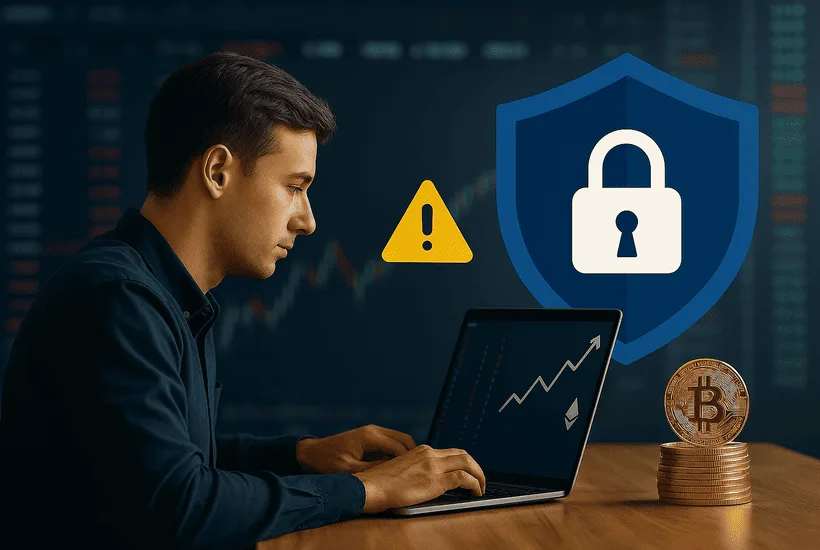- Use MEV-protected RPCs, low slippage settings, and verified token contracts to stay safe on-chain.
- Avoid common mistakes like trading in low-liquidity pools or during high gas hours.
- Understand how arbitrage bots work and why beginners should practice before trying live strategies.
As decentralized finance (DeFi) continues to grow, more users are turning to on-chain trading to take advantage of full asset ownership, transparency, and global accessibility. But trading directly on a blockchain—via decentralized exchanges (DEXs) like Uniswap, Curve, or PancakeSwap—comes with unique risks that many beginners underestimate.
Unlike centralized exchanges where your trade is abstracted behind a user interface, on-chain transactions are public, programmable, and exploitable. If you’re not careful, MEV (Maximal Extractable Value) bots, sandwich attacks, and arbitrage manipulation can eat into your trade or leave you with a significant loss.
In this guide, we break down how to stay safe when trading on-chain by understanding how MEV works, how arbitrage plays into the ecosystem, and what steps you can take today to protect your wallet and your capital.
Newsletter
Get weekly updates on the newest crypto stories, case studies and tips right in your mailbox.
What is on-chain trading?
On-chain trading is the act of executing transactions directly on a blockchain, usually through a decentralized exchange. It doesn’t require intermediaries or KYC — giving traders freedom and privacy. However, every transaction is visible in the mempool (a public queue of pending transactions), making it vulnerable to manipulation by automated bots and validators. This visibility is where most of the threats emerge.
MEV (Maximal Extractable Value)
MEV is the profit a miner or validator can extract by reordering or inserting transactions within a block. In practice, MEV bots scan the mempool for profitable trades, like large swaps, and jump in ahead of them — a strategy known as front-running.
For example, if you place a large buy order, a bot may copy it and submit the same transaction with a higher gas fee. It gets executed before yours, pumps the token price, and sells just after your transaction — leaving you with worse execution and zero gain.
Sandwich attacks
This is one of the most common MEV strategies. A bot sees your trade, places a buy order before yours, and a sell order right after. Your trade is “sandwiched,” causing you to buy at a higher price and often exit at a lower price than expected. These attacks target trades with high slippage tolerance and low liquidity, where price impact can be easily manipulated.
Arbitrage bots
Arbitrage is not a malicious activity in itself — it’s the process of profiting from price differences across exchanges. But when bots use your trade to create those differences, you may end up becoming the exit liquidity for their strategy.
For example, if you buy a token that’s underpriced on one DEX, bots will often flood the pool and rebalance prices across other venues. If you don’t monitor your slippage or timing, you may get filled at the worst possible rate.
How to Protect Yourself
Staying safe on-chain requires both tools and awareness. Here are six practical techniques every trader should use:
- Use Low Slippage Tolerance
Never use default slippage settings. Set it to 0.1%–0.5% when possible. High slippage is an open invitation for MEV bots.
- Use MEV-Protected RPCs
Avoid exposing your transaction to the public mempool. Instead, use services like:
• Flashbots Protect
• MEV Blocker by CoW Protocol
• Eden RPC (for supported chains)
These tools route your trade privately to validators.
- Avoid Low Liquidity Pools
Always check liquidity depth before trading. Use tools like DEXTools, Dexscreener, or GeckoTerminal. If the total pool is under $50K, approach with caution.
- Break Large Trades Into Smaller Parts
Executing trades in chunks reduces slippage and makes it less attractive for bots to exploit you.
- Verify Token Contracts
Use official project links, CoinGecko, or CoinMarketCap to confirm you’re trading the real token. Avoid contracts shared in Telegram or Discord groups unless verified.
- Watch Gas Prices and Timing
During network congestion, MEV bots become more aggressive. Avoid trading during gas spikes or major announcements when mempool activity is high.
Understanding arbitrage (safely)
Arbitrage is a legitimate trading strategy — buying an asset on one exchange where it’s cheaper and selling it on another where it’s more expensive. On-chain arbitrage is executed by bots within seconds, capitalizing on price gaps across DEXs.
While attractive in theory, beginners often lose money attempting it manually due to:
•High gas costs
• Slippage
• Failed transactions
If you’re interested in arbitrage:
• Start with testnet environments.
• Learn to use APIs (like 1inch or Paraswap).
• Understand transaction speed and capital efficiency.
Without automation or fast execution, you may be at a serious disadvantage. Trading on-chain can be powerful — but also risky if approached blindly. MEV bots, sandwich attacks, and arbitrage manipulation are not theoretical: they happen every block.
 Rita Dfouni
Rita Dfouni









